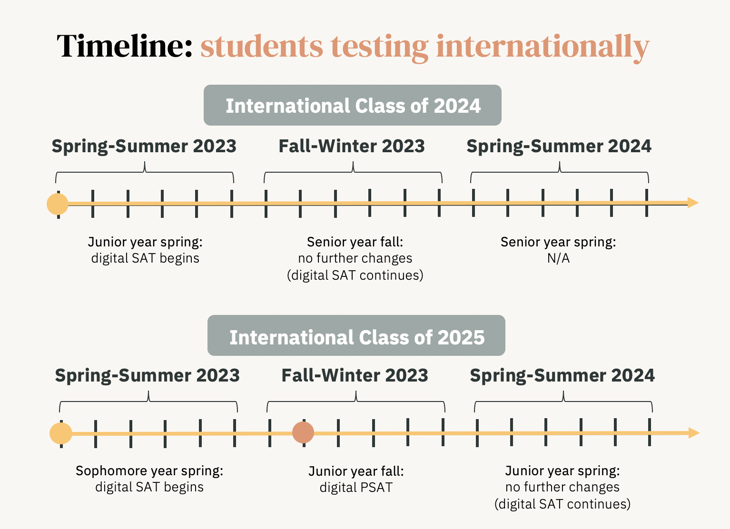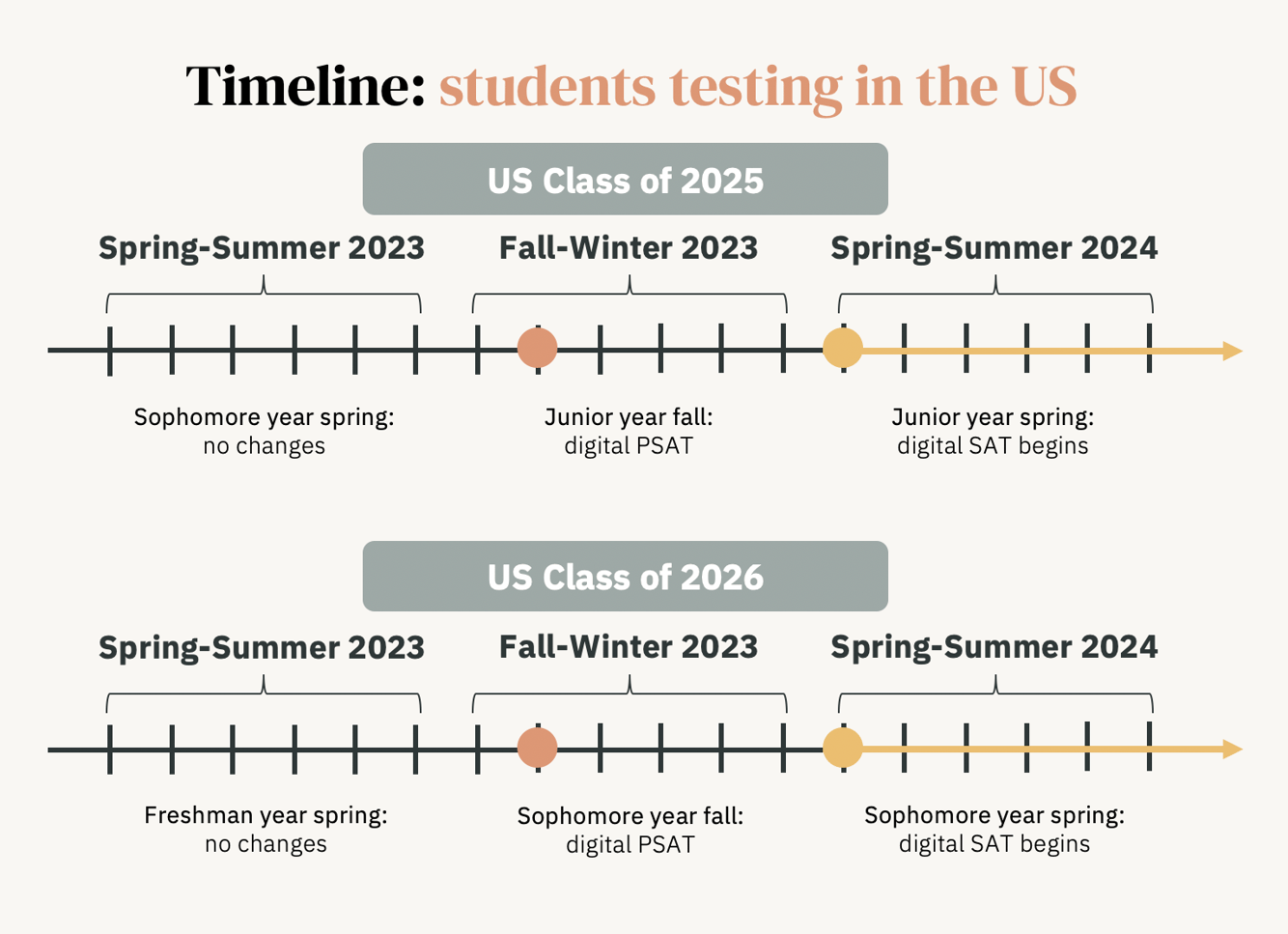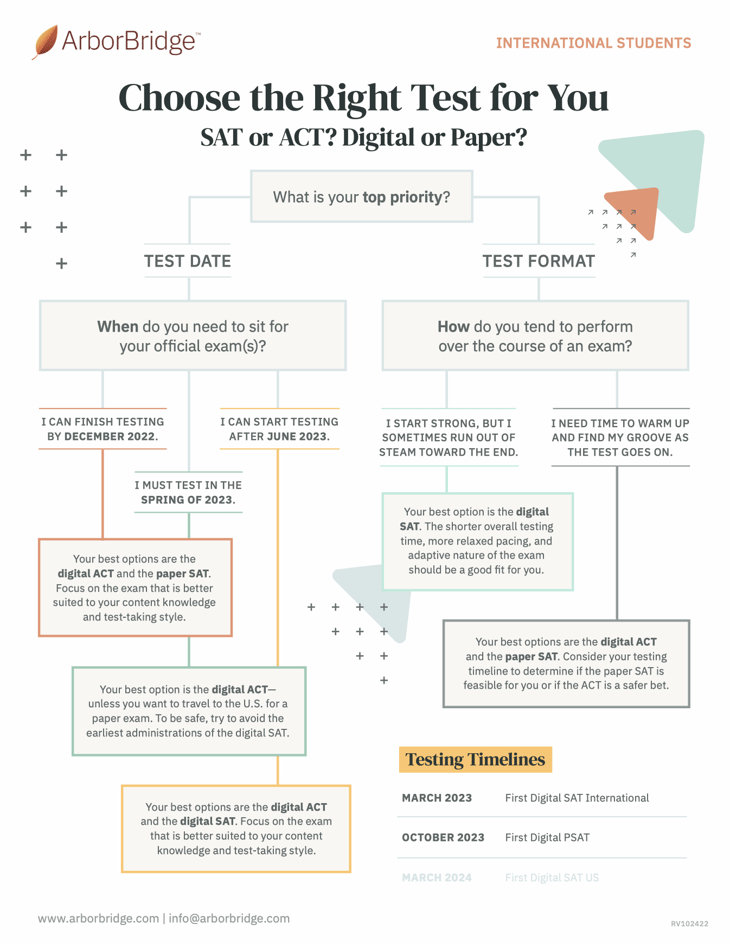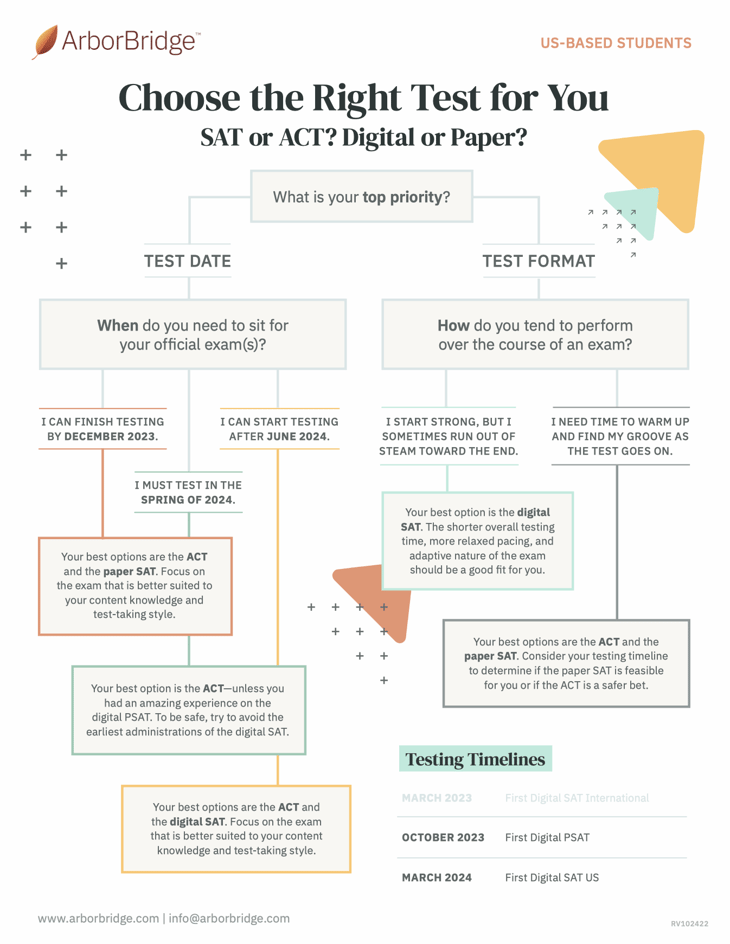The biggest news in the testing world is that the SAT has gone digital. While some things are staying the same—the exam still tests Verbal and Math skills, and the total score is still out of 1600—much has changed.
In this series of posts, we're answering counselors' biggest questions about the new SAT. In the first post, we covered the ins and outs of adaptive testing. This time, we'll answer your most pressing questions about testing timelines. For a video version of this post, click below.
When will students start taking the digital SAT?
For international students testing outside of the US, the format has already changed.
For these students, December 22nd, 2022 was the last chance to take the paper-based SAT. And, starting with the March 11th 2023 test, the test is now fully digital.

Internationally, students in the graduating classes of 2024 and 2025 are the first to be affected by the changes to the SAT's format.
This coming fall, abroad and in the US, students in the class of 2025 and younger will take the first administration of the digital PSAT. For US students, especially, this test date will be key, as it will likely be their first exposure to digital adaptive tests.

For students testing in the US, the final chance to take the paper-based SAT will be in December 2023. Then, the first full administration of the digital SAT will be in March 2024.
This means that US-based students in the class of 2025 will start taking the digital SAT in the spring of their junior year; for the class of 2026, it’ll be the spring of their sophomore year.
Should students avoid the first digital test dates?
In general, yes. If possible, students should avoid the first 2–3 administrations of the new test. By waiting, students give the College Board and site administrators time to work out any hiccups that naturally happen when administering a new test.
Waiting will also give students more time to gain familiarity with the new test format and to take advantage of additional practice materials that will gradually become available.
However, please note that we are not urging a full-scale, year-long ”stay away.” Reports from the pilot dates for the new test indicate that there weren’t any major logistical issues, and the rollout of Bluebook (the College Board’s official practice test app) has been smooth overall, which bodes well for the early official administrations.
That said, there isn’t a one-size-fits-all recommendation. Whether a student should or shouldn’t take a test on a certain date all depends, first, on their timeline, and, second, on what matters most to them in a test: the date or the format.
Which exam should students take? When?
When you’re helping a family decide which exam they'll take and a when they'll take it, we recommend looking ahead at the student’s schedule for the academic year. Their opportunities to sit for the SAT/ACT could be limited if they have important commitments that conflict with key test dates. In that case, they’ll want to start by identifying the best times during the year when they'll be able to focus on preparing for and taking exams. Ideally, they’ll leave themselves enough room to sit for 2 to 3 official exams to maximize their point increases and continue to build their familiarity with the test over time.
If they have more flexibility to prep and sit for exams at any point during the year, they can instead focus on the test format and testing experience itself. Depending on their test-taking style, the length and structure of the exam might make a significant difference for them. Maybe the shorter digital SAT is a great fit for them because of their lower test-taking stamina. Or maybe the ACT is well suited to their reading speed. There's a lot to think about, so taking diagnostic exams is a great place to start.
After you have a sense of the student’s priorities, you can use the following decision trees to narrow down which exam and which date are right for them.
Click each chart to download a large family-friendly version.
To read a more detailed breakdown of each branch in the international decision tree, check out our blog post for international students.
And for a breakdown of each branch in the US decision tree, check out our blog post for US students.
Need more individualized advice?
The recommendations above are general suggestions. If you have specific questions, reach out to our experts here. We’re happy to help in any way we can.
About ArborBridge
ArborBridge is the global leader in innovative, digital, one-on-one tutoring. With nearly a decade of experience teaching students online, ArborBridge supports students of all kinds: home schoolers, AP students, test preppers, and more. Our tutors specialize in creating personalized plans and in providing compassionate support for students and families.








